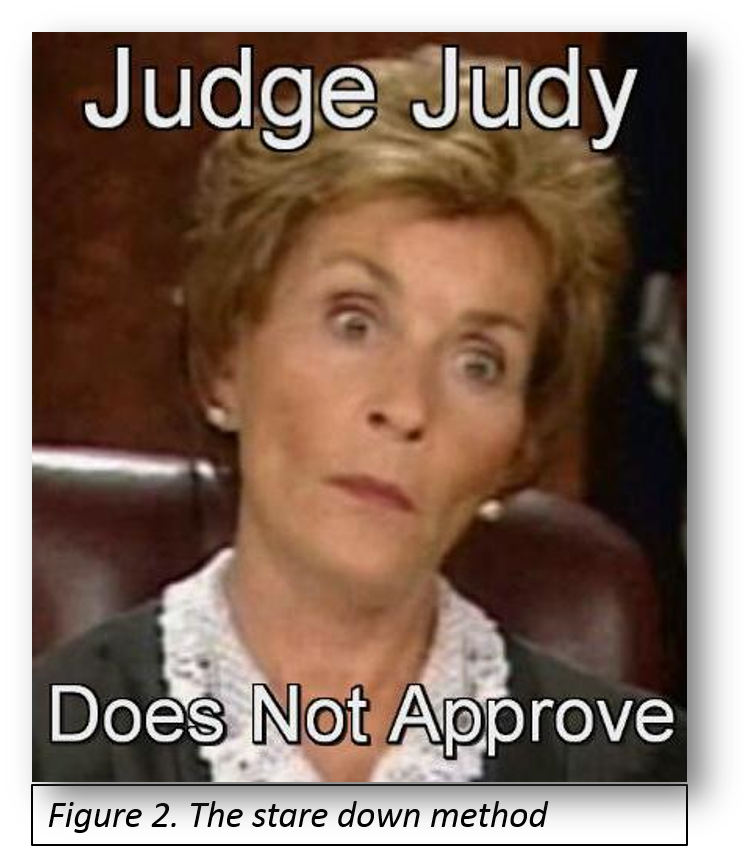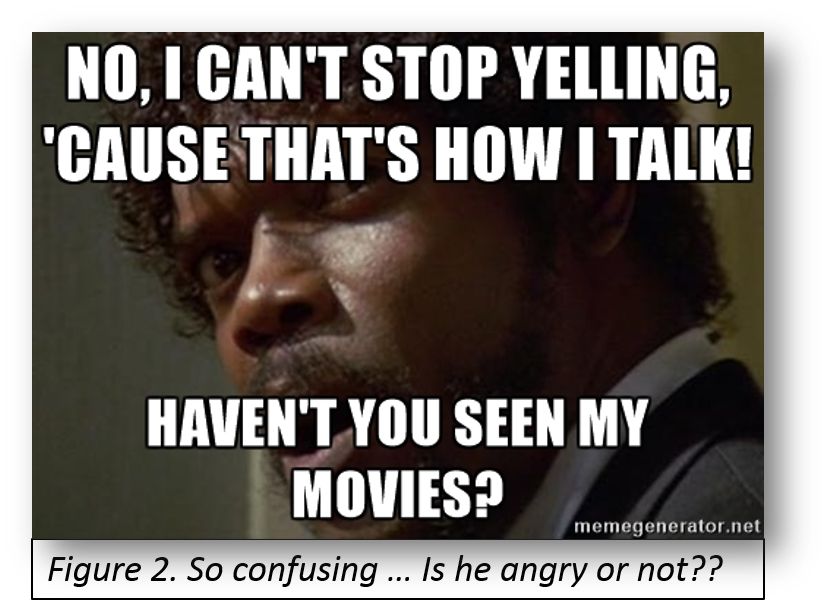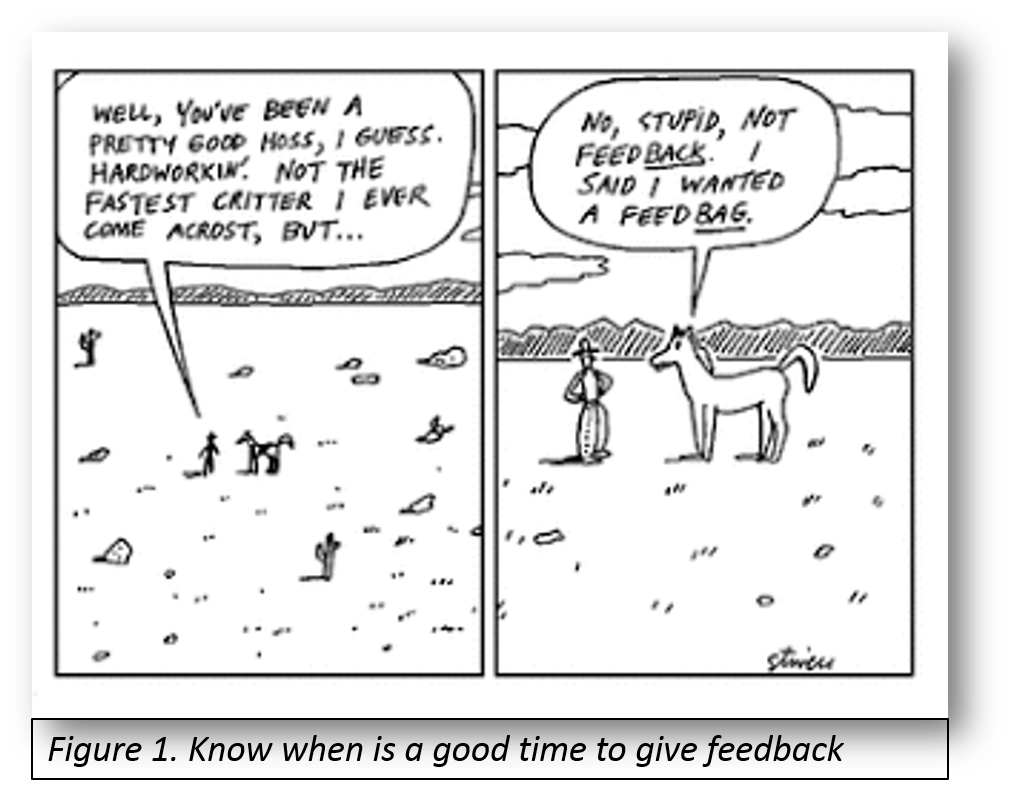
Howdya like that feedback???
Vol 2: May 2016
![]()
Giving Feedback? Or Criticizing?
Background
Giving “Productive Feedback” (not just feedback) is essential otherwise both the giver and receiver have wasted their time. Your feedback usually won't be productive if it's focused on making the other person feel bad or look foolish in front of peers. — Scott Halford
Giving feedback to your colleagues or employees is important. It provides an observer's insight into how one’s performance is progressing, and provides possible solutions when needed.
But, for some people, "Can I give you some feedback?" generates fear and anxiety. It almost translates as, "Can I completely tear you down?" It is essential to bear this in mind when giving feedback; hence, here are 7 tips that can help with giving productive feedback:
1. Create a safe learning environment. People who receive feedback apply it only about 30% of the time. If the learner doesn't feel comfortable, the feedback can ultimately be unproductive. Always add civility, respect, and thoughtfulness into your feedback approach. Don't be mean-spirited or throw any personal attacks; the feedback should be non-judgmental. Instead, create opportunities to build confidence and skills.
2. Be positive and constructive. Give at least as much positive feedback as you do negative. Negative feedback indicates an adjustment needs to be made (response often: defensiveness). Positive feedback leaves the recipient open to taking new direction. Just make sure the recipient understands what needs to be changed and a suggested corrective action plan in order to make it constructive. Keep in mind that the "compliment sandwich" may not be the most effective technique and may leave the recipient focusing only on the last positive comment instead of the corrective action plan.
3. Be specific. Avoid ambiguity like "You need to know your patient better." Be specific in stating the task you want accomplished in a positive way, like, "You're smart. Next time I want to hear you present your patient in an organized system by system fashion and discuss the anesthetic implications of their medical history."
4. Be immediate. Don’t wait too long or just write it in an evaluation. Waiting 3 months to tell someone that his or her performance is average makes it difficult to grasp the changes needed to change direction. It's too ambiguous and relies on memory, which can be faulty. Indicate when feedback is about to be given and ensure it is given at an appropriate time for both the teacher and learner.
5. Be tough, not mean. Often start by asking his or her perspective on the situation. Use multiple “asks” to explore learner’s self-assessment and use open-ended questions (ie. “How do you think that procedure/discussion/event went?” “What do you think are the advantages and disadvantages for the anesthetic plan for this patient?”) Resist saying how stupid his or her actions were, even if they were inappropriate for the situation.
6. Be a follower. Follow up with your suggestions/action plans. Explore learner’s understanding/reaction of the feedback and the suggested action plans. If possible, create a plan for ongoing monitoring of the action plan.
7. Be mindful. When giving feedback, think of the attendings who made you feel good about yourself as a resident. What did they do? From whom did you learn the most — the person you feared or the one who made you feel like a colleague? We were all residents once. Try not to forget that.

Citations:
Halford, Scott. "Five steps for giving productive feedback." Entrepreneur. Entrepreneur Media, Web. 3 May 2016.
Banner Image: Man Yelling at Woman. Digital Image. CX Company. Hans van Dam. 15 May 2015. Web. 4 May 2016.
Figure 1: OBA (obaschor). "@BroderickGreer: All them fives need to listen when a ten is talking. And #SCOTUS Ginsburg is a 10!!" 24 Aug 2014, 12:33PM. Tweet.
Close
Narrative #1 (Attending to Attending)
Theme: Feedback Fears
Location: In the Bunker...
Attending A: "I’m really worried about Resident A. Not only is he weak in his knowledge base and skill set for his level of training, he completely lacks insight. He is totally unaware of it and is always defensive."
Attending B: "So did you try to give him constructive feedback about what you think?"
Attending A: "No"
Attending B: "Why not?"
Attending A: "Hmm … Well, I’ve learned that’s the only way to get promoted around here!!"
-
Fact or Fiction:
- FACT – this is truly how some attendings feel
-
What went wrong with it? – “Behavior is inconsistent with a culture of safety”

- Feedback was not given. If Resident A is truly dangerous – the patient eventually suffers.
- Almost all residents would want to know how they could be better if they were told in the right way. Even though he lacks insight, if nobody is willing to step up and provide constructive feedback, his future career is in jeopardy and he has everything to lose.
-
What could have been done better? “Specific strategies to implement a culture of change”
- Adopt the right strategy that works for the attending & the resident to get the message across. Consider the following in the process of giving feedback:
- Avoid giving feedback in public places or with a loud voice.
- Talk more about observed objective events rather than subjective thoughts
- Create a safe learning atmosphere
- Provide positive feedback too, be specific.
- Be tough but not mean.
- Avoid displays of intensely negative emotions when giving feedback.
- Often start by asking his or her perspective on the situation.
- Resident teaching evaluations should be viewed as attending feedback to the department/institution and are used as an integral part of the promotion process. They should be viewed as opportunities to objectively and constructively comment on the totality of the quality of teaching and to provide information for the chair/vice-chair for education that may help the faculty improve. Pejorative comments should NOT be included in HAMSTER; keeping these things in mind will further allow the culture of feedback to change.
- Residents also need to understand that ultimately their education as well as patient care suffers if they don’t improve and make some changes on their end. Residents should be active rather than passive learners in this process. So speak up and don’t be afraid to ask for honest feedback!

Citations:
Banner: Shannon. "5 ways to collect user feedback and improve your website." AddThis. Digital Image. 29 Sept 2015. Web. 5 May 2016.
Figure 1. "Giving and receiving feedback." Haiku Deck. Digital Image. 18 Nov 2015. Web. 4 May 2016.
Figure 2. Doctorchibi. "Judge Judy does not approve." DeviantArt. Digital Image. Web. 4 May 2016.
Close
Narrative #2 (Attending to Resident)
Theme: Different Resident Interpretations of Feedback
Location: OR 7...Patient arrives with tracheostomy in place for ENT procedure. Shortly after induction, it is evident that the trach tube is cuffless and the OR is polluted with sevoflurane (patient breathing spontaneously, stable).
Attending: "Did you put the cuff up on the trach?"
CA3 Resident: "Oh shoot...sorry, I didn't realize the trach was cuffless. I'll be right back." [Resident runs to core to get reinforced tube. Tube is exchanged successfully and case proceeds.]
Attending (loudly): "What WAS that?? You're better than that! C’mon now, you're a CA-3 and you didn't do any airway exam?? … I know it's easy to get a little complacent this year, but there's no excuse not knowing before starting the case what type of trach this patient has and when it was placed. You’ve gotta be more prepared next time and you need to hold yourself to a higher standard in the future."
-
What was done well?

- Feedback was given; the attending did not ignore the situation.
- Feedback was given within a reasonable time period.
- The feedback was truthful and firm since it could have affected the patient’s safety.
-
What went wrong with it? – “Behavior inconsistent with a culture of safety”
- The attending’s feedback targeted the resident instead of just the objective situation
- The criticism was not constructive nor did the attending assess the resident's knowledge or understanding of the situation.
- Feedback was delivered loudly in front of an entire OR audience.
-
What could have been done better? “Specific strategies to implement a culture of change”

- The attending could have asked the resident why he missed that piece of important information? Get the resident’s perspective on his/her behavior.
- Private feedback or in a very low voice is always more productive than when done in public - which can be humiliating.
- Tailor your method of giving feedback to the resident’s personality.
- However, sometimes firm, but fair feedback is poorly received by residents. "You've got to do better than that." It might sting a little, but it's true.
See Different Resident Interpretations of the Poorly Delivered Feedback Above (while talking to fellow CA3 residents)
-
CA3 Resident A's interpretation: I deserved that. I'm definitely never going to make that mistake again.
-
CA3 Resident B's interpretation: I can't believe I did that, I suck. He must think I'm so stupid. I feel so stupid. I Just can’t believe I’m still doing this, I’m not cut out for this. I’m seriously thinking of quitting.
-
CA3 Resident C's interpretation: I can't believe he yelled at me, that is so unprofessional. I'm reporting this to Dr. Gaiser now.
QUESTION: Was the feedback productive? What is the appropriate way to handle feedback that is negative?
Please send your responses and thoughts to Anes.CoCA@uphs.upenn.edu

Citations:
Banner: "Feedback." Al Manhal. Digital Image. Web. 5 May 2016.
Figure 1. "Crying Peter Parker." Meme Generator. Digital Image. Web. 4 May 2016.
Figure 2. "Be better than the gap." 9GAG. Digital Image. Web 4 May 2016.
Figure 3. Admin. "GM and CEOs: courage and compensation." The Next Phase. Digital Image. 19 Jun 2014. Web. 4 May 2016.
Close
Narrative #3 (Attending to Resident)
Theme: Emphasizing the Damage of Giving “Public Feedback”
Location: OR 16
Attending: "You didn't tell me that this patient is on dialysis."
Resident: "I'm sorry, I totally missed it on the preop."
Attending (loudly to room): "How could you possibly miss that? Didn't you notice the GIANT AV fistula when you placed the IV?"
Attending surgeon (to surgical resident while scrubbing at the sink): "Can you believe how dumb our anesthesia resident is? I'll have to keep an eye out for that one in the future."
-
What was done well?

- Feedback was given; the attending did not ignore the situation.
- Feedback was delivered within a reasonable time span.
-
What went wrong? – “Behavior inconsistent with a culture of safety”
- Criticism was delivered in public – to an audience.
- The resident’s future relationship with the surgical team was jeopardized.
- The attending’s word choices could have been better geared towards “education.”
-
What could have been done better?
- See alternate feedback response below.
Alternate Response:
Attending: "You didn't tell me that this patient is on dialysis"
Resident: "I'm sorry, I totally missed that on the preop"
Attending (quietly after drapes are up): "I noticed you missed an important part of the patient's medical history on the pre-op. I wonder where you were getting your information for the pre-op."
Resident: "I look at the history tab and the problem list to fill in my note."
Attending: "I think you should also use the surgeon's last office visit or letter to get a more complete story."
Resident: "Thanks, I haven't been doing that but I will from now on."

Citations:
Banner: Lindsey Pollack. "Yelling doesn't work: how to give negative feedback to millenials." Lindsey Pollack. Digital Image. 20 Jan 2015. Web. 5 Aug, 2016.
Figures: "14 Gordon Ramsay memes guaranteed to make you laugh." Buzzfeed Community. Digital Image. Buzzfeed, Inc. 5 Aug 2015. Web. 4 May 2016.
Close
Narrative #4 (Attending to Administrative Staff)
Theme: Treating All Members of the Department with Respect
Location: In an office setting with other administrative staff and faculty present
Attending (voice raised, visibly upset): “I needed this finished two days ago!”
Admin staff: “Oh gosh, I’m sorry! I didn't know there was a deadline.”
Attending: “I need you to start prioritizing these things instead of making excuses to me!”
-
What went wrong? – “Behavior is inconsistent with a culture of safety”

- The attending made assumptions about the administrative staff without finding out what their perspective was.
- Criticism was delivered in public – to an audience, which could be humiliating.
- The attending’s feedback targeted the person (administrative staff) instead of the situation.
- The attending’s non-verbal cues were threatening: voice raised, visibly annoyed – can be interpreted differently by different individuals. Intensely negative emotions deter from the message.
-
What could have been done better? “Specific strategies to implement a culture of change”
- Even though the administrative staff may have been at fault for failing to meet a deadline, the attending could have conveyed the feedback more effectively. Consider the following while giving feedback:
- Avoid giving feedback in public places or with a loud voice
- Talk more about observed objective events rather than subjective thoughts
- Create a safe learning atmosphere
- Provide positive feedback too, be specific.
- Be tough, but not mean.
- Often start by asking his or her perspective on the situation.
- Take responsibility when applicable (eg. “I should have been clear about the urgency of this project. I should have given you clear deadlines.”)
- A key question is whether this is a pattern. If so, and feedback from the attending has not yielded results, then it should be discussed with the supervisor so that the problem can be addressed rather than ignored. Conversely, if the administrative staff felt like the attending treated them inappropriately, then the COO should be notified as well.

Citations:
Banner: "Giving and receiving feedback on Create50 short stories." Create50. Digital Image. Web. 5 May 2016.
Figure 1. Anonymous. "Hello! Put on your listening ears!" Imgflip. Digital Image. Imgflip LLC. Oct 2013. Web. 5 May 2016.
Figure 2. "Angry Samuel L Jackson." Meme Generator. Digital Image. Web. 5 May 2016.
Close
Narrative #5 (Attending to Resident)
Theme: Feedback in Front of an Awake Patient
Location: OR 14
[Resident performing thoracic epidural with an attending she has not worked with before.]
Attending: "What the hell do you think you're doing with your hands? You need to set yourself up for success."
Resident: "Sorry, this is how I was told to do it before."
Attending: "Well, if you do it your way you can't even tell where you are or where you're going with your needle."
[Patient looks up at nurse terrified.]
-
What was done well?
- Feedback was given; the attending definitely had the right intention to teach.
- Feedback was delivered within a reasonable time span.
-
What went wrong? – “Behavior inconsistent with a culture of safety”:
- Feedback, which involved criticism alluding to incompetence, was delivered in the presence of an awake patient. This can affect the patient’s confidence and trust in the healthcare system.
- Fact — attendings have preferences, and various attendings will tell residents different ways to do the same thing.

-
What could have been done better?
- The attending could show the resident a different preferred way to do the procedure, while acknowledging that some other people might do it another way and clearly stating the reasons why his/her method is preferred. Make it an educational process for both parties; who knows, maybe the attending could learn something from the resident as well.
- If something is so inconsequential that the corrective value of criticism is low or if it is “minutiae” without any patient safety implications, you might consider keeping that feedback to yourself or referring to it as a “suggestion” instead.
- During the preoperative discussion, residents should remember to acknowledge if they have minimal experience in a procedure and ask if the attending has any preferences.
- The attending should prepare the patient for the teaching environment and should avoid phrases that could be perceived as frightening by the patient. See alternate response below.
Alternative Scenario:
Attending (addressing the patient): "Mrs. A, we'll just be talking ‘medical jargon’ back here while we work, ok?."
Attending (to the resident): "I'll show you how I do this so I set myself up for success."
Resident: "Thanks, I'm happy to see how you do it."
Attending: "As you already know, there are lots of different ways and you'll have to decide what works best for you."

Citations:
Banner: Cathy Meyer. "21 things no one tells you about divorce." About.com. Digital Image. 3 Mar 2016. Web. 5 May 2016.
Figure 1. Cameron Campbell. "Vocab #4." Vocab blogs. Digital Image. 26 Feb 2013. Web. 5 May 2016.
Figure 2. "Case Closed Judge Judy." Meme Generator. Digital Image. Web. 6 May 2016.
Close
© The Trustees of the University of Pennsylvania | Site best viewed in a supported browser. | Report Accessibility Issues and Get Help | Privacy Policy | Site Design: PMACS Web Team.
